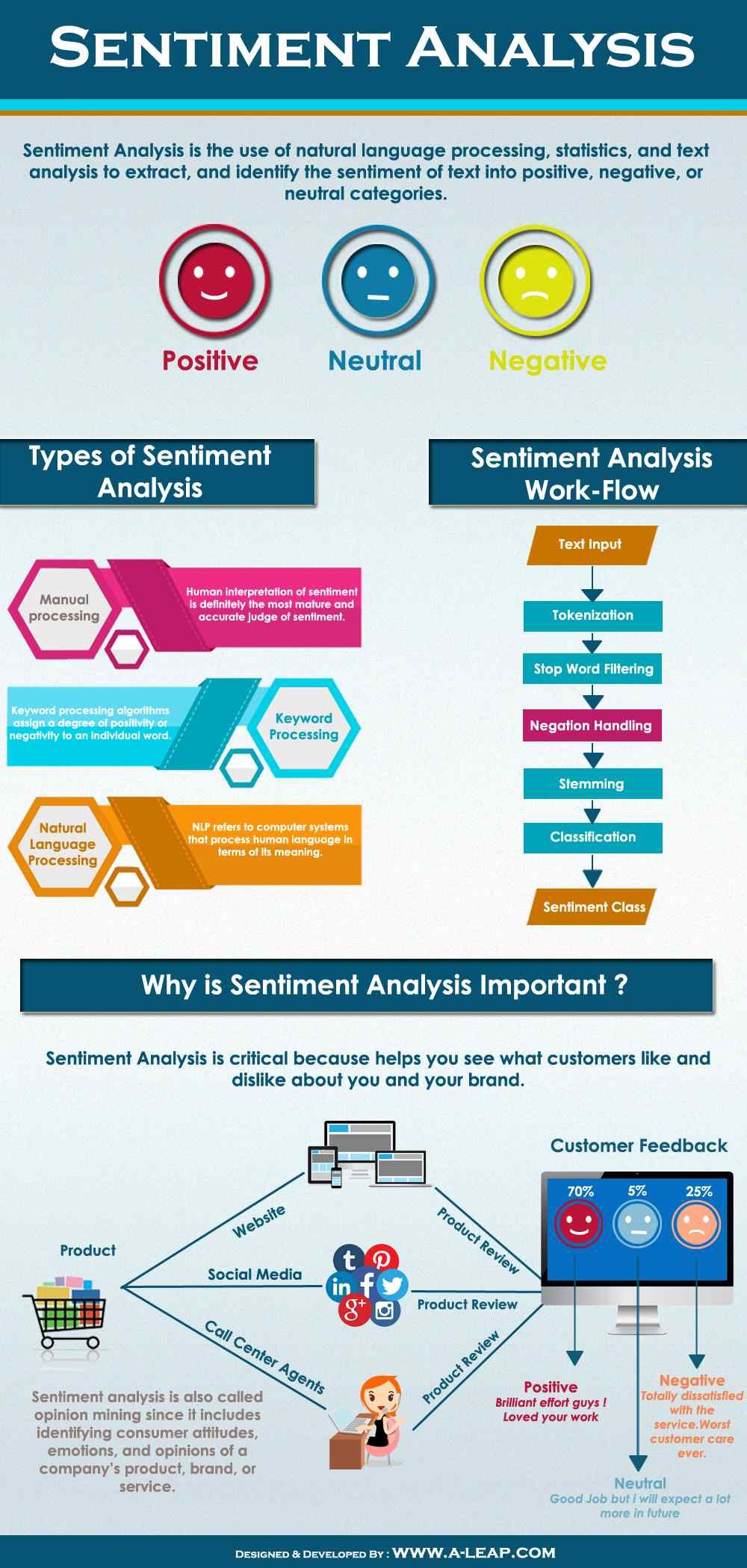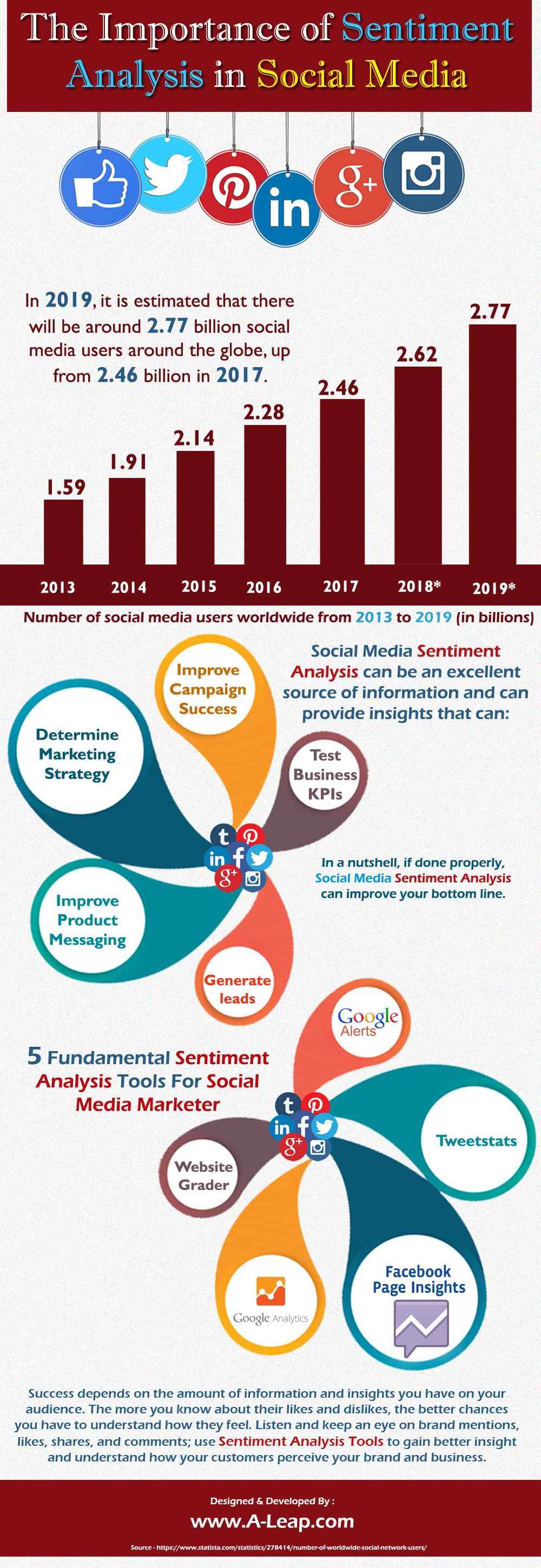What is Data Visualisation and how it is influencing decision making

Performing sentiment analysis
- SVMs
- Naive Bayes
- Decision Trees
- Dictionary
- Corpus
The best approach for sentiment analysis in social media is a combination of both these algorithms. However, the most commonly used machine learning algorithms is the Naïve-Bayes algorithm.
So, let us learn what is the Naïve-Bayes classifier?
Naïve-Bayes algorithm is a machine learning classification algorithm through which each element is individually valued in order to determine a probability that the sum of the values will deliver a pre-defined outcome.
Here’s an example:
Any fruit can be considered as an apple if it is round in shape, red in color and about 3 inches in diameter. These features are interdependent and also they depend on the existence of various other features. All of these properties collectively contribute to the possibility that the given fruit is an apple. And thus, it is known as “Naïve”.
In case of social media sentiment analysis, Naïve-Bayes classifier is used in order to determine if a particular social mention for any event is sentiment-wise positive, negative or neutral.
Naïve-Bayes first requires having a dataset. Textual sentiment analysis usually arrives in the form of a set-of-words already sorted out in positive and negative sentiment categories.
Every positive word will have +1 scoring while the negative words will have -1 scoring each. Certain words that are more positive or negative in degree (as compared to other sorted words) may be assigned higher values. Regardless, if the overall score for a particular mention is positive in value, then it is mentioned positively and vice versa.
As stated earlier, no social media sentiment analysis algorithm is perfect. Just the way humans don’t get it right all the time; the machines can’t be expected to do it either. Even in case the bag-of-words are categorized in the best possible correct way, contextually it is not possible to justify the categorization all the time.
Still, for any new campaign categorized positive and negative keywords help in sentiment monitoring and this in turn, helps in molding the event/brand strategy accordingly.
However, there are various other benefits of sentiment analysis through social media:
Benefits of sentiments analysis
Sentiment analysis has become quite a useful concept in social media monitoring. It allows gaining an overall view of a wider a public opinion behind any particular campaign or event. Different social media monitoring tools and real time analytics capabilities make the process quicker and easier than ever before.
The application of sentiment analysis in social media is quite broad and powerful. Extracting insights from the data available on social media platforms is being widely adopted by different organisation across the world owing to the fact that sentiment analysis helps them in brand management. It helps in understanding the audience opinions in order to outline their brand/campaign/product strategy accordingly. This not only helps them to comprehend the reactions of their audience but also in measuring the ROI of their marketing campaign and curating a concrete plan for their future campaigns. It also helps building a good customer support service. Sentiment analysis also help is quickly understanding the consumer attitudes and react accordingly in order to modify public opinion and campaigns.
Sentiment analysis as a powerful tool
Sentiment analysis is a powerful tool to understand the overall public opinion about any event/campaign/brand on the social media platforms. In turn, the future campaigns, brand management and products are planned based on the received feedback. Perhaps, social media is the largest pool for mining public opinion and collect data on the failure or success of a product, brand or marketing event in public eyes.
However, one should be careful in using sentiment analysis in social media. On surface, it may look like consumers are appreciating one strategy/product/brand over another but first and foremost one needs to analyze the context. The earlier and better the responses are sorted out based on their contextual meaning, the most useful the data will become to the data analyzers. One should keep testing the public sentiment and keep modifying their methods of testing and of analysis. The more amount of social media response data one has about their target audience and their industry, the better will be the chances of campaign modification and increasing the overall ROI. Overall, using sentiment analysis methods allows the organisations to evaluate the attitudes of their target consumers.


Contact us
support@a-leap.com
